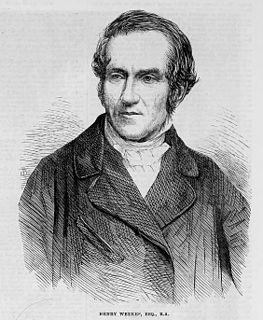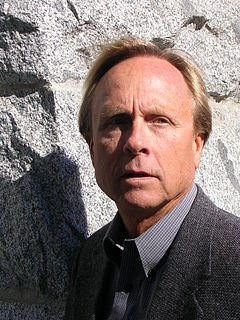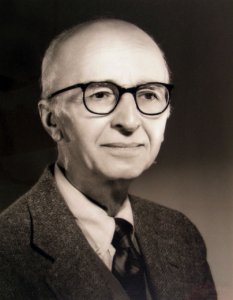
Romanesque architecture is an architectural style of medieval Europe characterized by semi-circular arches. There is no consensus for the beginning date of the Romanesque style, with proposals ranging from the 6th to the 11th century, this later date being the most commonly held. In the 12th century it developed into the Gothic style, marked by pointed arches. Examples of Romanesque architecture can be found across the continent, making it the first pan-European architectural style since Imperial Roman architecture. The Romanesque style in England is traditionally referred to as Norman architecture.
Robert of Jumièges was the first Norman archbishop of Canterbury. He had previously served as prior of the Abbey of St Ouen at Rouen in Normandy, before becoming abbot of Jumièges Abbey, near Rouen, in 1037. He was a good friend and adviser to the king of England, Edward the Confessor, who appointed him bishop of London in 1044, and then archbishop in 1051. Robert's time as archbishop lasted only about eighteen months. He had already come into conflict with the powerful Earl Godwin, and while archbishop made attempts to recover lands lost to Godwin and his family. He also refused to consecrate Spearhafoc, Edward's choice to succeed Robert as Bishop of London. The rift between Robert and Godwin culminated in Robert's deposition and exile in 1052.

Laon Cathedral is a Roman Catholic church located in Laon, Aisne, Hauts-de-France, France. Built in the twelfth and thirteenth centuries, it is one of the most important and stylistically unified examples of early Gothic architecture. The church served as the cathedral of the Diocese of Laon until 1802, and has been recognized as a monument historique since 1840.

Gislebertus, Giselbertus or Ghiselbertus, sometimes "of Autun", was a French Romanesque sculptor, whose decoration of the Cathedral of Saint Lazare at Autun, France – consisting of numerous doorways, tympanums and capitals – represents some of the most original work of the period.

Romanesque art is the art of Europe from approximately 1000 AD to the rise of the Gothic style in the 12th century, or later depending on region. The preceding period is known as the Pre-Romanesque period. The term was invented by 19th-century art historians, especially for Romanesque architecture, which retained many basic features of Roman architectural style – most notably round-headed arches, but also barrel vaults, apses, and acanthus-leaf decoration – but had also developed many very different characteristics. In Southern France, Spain, and Italy there was an architectural continuity with the Late Antique, but the Romanesque style was the first style to spread across the whole of Catholic Europe, from Sicily to Scandinavia. Romanesque art was also greatly influenced by Byzantine art, especially in painting, and by the anti-classical energy of the decoration of the Insular art of the British Isles. From these elements was forged a highly innovative and coherent style.

Ralph de Luffa (or Ralph Luffa was an English bishop of Chichester, from 1091 to 1123. He built extensively on his cathedral as well as being praised by contemporary writers as an exemplary bishop. He took little part in the Investiture Crisis which took place in England during his episcopate. Although at one point he refused to allow his diocese to be taxed by King Henry I of England, Luffa remained on good terms with the two kings of England he served.

Henry Weekes was an English sculptor, best known for his portraiture. He was among the most successful British sculptors of the mid-Victorian period.

The Gloucester Candlestick is an elaborately decorated English Romanesque gilt-bronze candlestick, now in the Victoria and Albert Museum in London. It was made for Gloucester Cathedral between 1104 and 1113, and is one of the outstanding survivals of English Romanesque metalwork.

George Jerzy Zarnecki, CBE, FBA, FSA was a Polish Professor of the History of Art. He was a scholar of Medieval art and English Romanesque sculpture, an area of study in which he did pioneering research. From 1961 to 1974 he was a deputy director of the Courtauld Institute of Art, University of London.

The Eadwine Psalter or Eadwin Psalter is a heavily illuminated 12th-century psalter named after the scribe Eadwine, a monk of Christ Church, Canterbury, who was perhaps the "project manager" for the large and exceptional book. The manuscript belongs to Trinity College, Cambridge and is kept in the Wren Library. It contains the Book of Psalms in three languages: three versions in Latin, with Old English and Anglo-Norman translations, and has been called the most ambitious manuscript produced in England in the twelfth century. As far as the images are concerned, most of the book is an adapted copy, using a more contemporary style, of the Carolingian Utrecht Psalter, which was at Canterbury for a period in the Middle Ages. There is also a very famous full-page miniature showing Eadwine at work, which is highly unusual and possibly a self-portrait.
Peter Erik Lasko was a British art historian, Professor of Visual Art at the University of East Anglia, from 1965 to 1974, Director of the Courtauld Institute of Art, London, from 1974–85 and a Fellow of the British Academy.

Conrad Rudolph is an American art historian. He is Distinguished Professor of Medieval Art History at the University of California, Riverside. He is an elected Fellow of the Medieval Academy of America, and has received fellowships and grants from the Guggenheim, J. Paul Getty, Mellon, and Kress foundations, as well as from the National Endowment for the Humanities and the College Art Association. He has served on the board of editors/advisors of or acted as consultant for several academic journals and university presses.

Jean Victor Edmond Paul Marie Bony was a French medieval architectural historian specialising in Gothic architecture. He was Slade Professor of Fine Art at the University of Cambridge from 1958 to 1961, Fellow of St John's College, Cambridge, and Professor of Art at the University of California at Berkeley, from 1962 to 1980.

St Mary's Church, Dymock is a Church of England parish church in the center of the village of Dymock in Gloucestershire, England. It is a Grade I listed building.
Amanda Simpson FSA, is a British medievalist, author, editor, librarian and art historian. Photographs attributed to her appear in the collection of the Conway Library at the Courtauld Institute of Art, where she worked as Conway Librarian in the 1970s while completing her studies. She completed her PhD at the Courtauld Institute in 1978 on the subject of 14th-century English and Bohemian painting. She became a Fellow of the Society of Antiquaries of London on 5 May 1990.
Carolyn Marino Malone is an American medievalist and academic. She is professor of art history and history at USC Dornsife College, Los Angeles, California, with a PhD in Art History and Medieval Studies (1973) from the University of California, Berkeley. Her research interests are English and French Romanesque and Gothic architecture and sculpture. She has published books on sculptural finds at Canterbury Cathedral, the abbey of St Bénigne in Dijon, the façade of Wells Cathedral, and monastic life in the Middle Ages. She served as Vice-President (1996-1997) and President (1999) of Art Historians of Southern California; Domestic Advisor to the Board of Directors of the International Center of Medieval Art (1984-1987); and was on the Board of Directors of the Medieval Association of the Pacific (1986-1989). She is a member of the Society of Architectural Historians.
Nicola Coldstream, FSA, is a British architectural historian and academic with special interests in the 13th and 14th centuries. Coldstream studied History and Fine Arts at Cambridge University and obtained her PhD at the Courtauld Institute of Art.
Elizabeth Parker McLachlan is an American photographer, professor, writer and editor. She specialises in the Bury Bible, and the depiction of liturgical vessels such as censers, and the myrophores (Myrrhbearers) in medieval manuscript art. She is a professor emerita of art history at Rutgers University, New Jersey, USA.
Neil Stratford FSA, a London born medievalist and Keeper Emeritus of Medieval and Later Antiquities at the British Museum, is recognised as a leading authority on Romanesque and Gothic art and sculpture. He was one of the founding members of the Corpus of Romanesque Sculpture in Britain and Ireland and is the Herbert Franke Chair at the Académie des Inscriptions et Belles-Lettres where he is an elected foreign member.
Malcolm Thurlby, teaches art and architectural history at York University, Toronto. His research interests focus on Romanesque and Gothic architecture and sculpture in Europe and 19th and early 20th century architecture in Canada.











